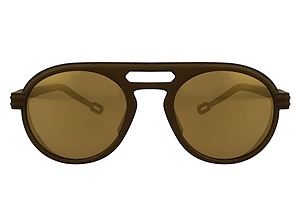MATERIALISE
Bio-based PA 11 for 3D-printing / Resin used for sustainable eyewear
 3D printed glasses are said to be sustainable (Photo: Materialise) |
Belgian 3D printing technology specialist Materialise (Leuven; www.materialise.com) has added a 100% bio based polyamide 11 polymer to its materials portfolio for additive manufacturing, with compatriot firm Odette Lunettes (Antwerp; www.odettelunettes.com/EN/home) using the polymer to make sustainable sports eyewear.
BASF 3D Printing Solutions (B3DPS, Heidelberg, Germany; www.forward-am.com), the additive manufacturing business unit of BASF and an investor in Materialise (see Plasteurope.com of 28.04.2020), produces the Ultrasint PA11 bio-based 3D printing material. The resin is based on an advanced Rilsan grade from French specialty chemicals group Arkema (Colombes; www.arkema.com) derived from sustainably farmed renewable castor seeds.
Related: Value of market for 3D printing materials to skyrocket
The production division of BASF 3D Printing Solutions, Forward AM, is to produce the sustainable eyewear. Additive manufacturing is said to curb overproduction versus conventional methods by generating no material waste, where up to 70% of acetate is disposed of with existing methods. Additive manufacturing also allows for cost effective production of smaller series runs.
BASF 3D Printing Solutions (B3DPS, Heidelberg, Germany; www.forward-am.com), the additive manufacturing business unit of BASF and an investor in Materialise (see Plasteurope.com of 28.04.2020), produces the Ultrasint PA11 bio-based 3D printing material. The resin is based on an advanced Rilsan grade from French specialty chemicals group Arkema (Colombes; www.arkema.com) derived from sustainably farmed renewable castor seeds.
Related: Value of market for 3D printing materials to skyrocket
The production division of BASF 3D Printing Solutions, Forward AM, is to produce the sustainable eyewear. Additive manufacturing is said to curb overproduction versus conventional methods by generating no material waste, where up to 70% of acetate is disposed of with existing methods. Additive manufacturing also allows for cost effective production of smaller series runs.
29.04.2022 Plasteurope.com [250140-0]
Published on 29.04.2022
